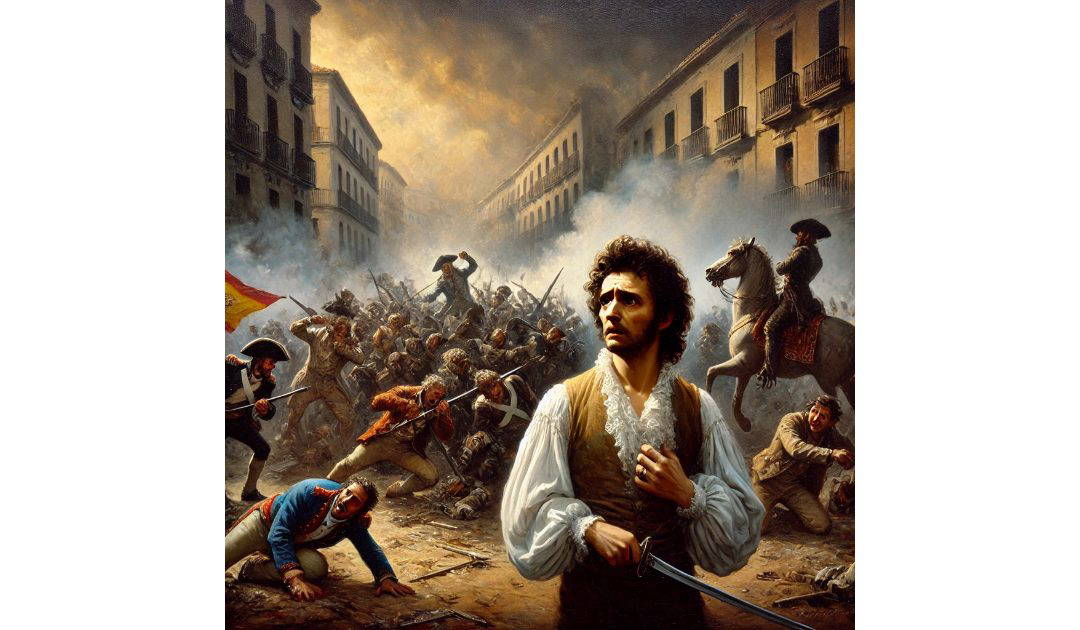On the 2nd of May, 1818, the people of Madrid rose up in rebellion against French occupation. The Dos de Mayo Uprising of 1808 remains one of Spain’s most significant and stirring historical events. It marks the beginning of the Spanish War of Independence against Napoleonic France. This rebellion not only encapsulated the fiery spirit of the Spanish people but also left a lasting legacy in the realm of art and culture, most notably through the lens of Francisco de Goya‘s paintings.
In 1808, Spain was under pressure from Napoleonic France. French troops were stationed in Spain under the guise of an alliance against Portugal, Spain’s adversary. However, the real intention was to destabilise Spain and install Napoleon’s brother, Joseph Bonaparte, as the king. Discontent grew in Madrid as the Spanish royal family was essentially held captive in Bayonne, France, and Joseph Bonaparte was poised to take the throne.
On the second of May, the tension reached its zenith. News spread that the last surviving members of the Spanish royal family were to be taken to France. This enraged the citizens of Madrid. The uprising began when a crowd gathered at the Royal Palace, urging for the release of the Infante Francisco de Paula. As the French troops tried to disperse the crowd, violence erupted. The people of Madrid, armed with whatever they could find, fought fiercely against the well-equipped French soldiers. The uprising was a spontaneous, passionate outburst of nationalistic fervour against foreign control.
Despite the bravery displayed by the Madrileños, the uprising was brutally suppressed by the French forces. The following day, the third of May, saw retribution as the French executed a large number of Spaniards. However, the Dos de Mayo Uprising ignited a nationwide revolt against the French, sparking the Peninsular War, which eventually culminated in the liberation of Spain.
The significance of the Dos de Mayo Uprising was immortalised in art by Francisco de Goya, one of the most eminent figures in Spanish painting. Goya, who was residing in Madrid during the uprising, captured the turmoil and raw emotion of the rebellion in his iconic painting, “The Second of May 1808”. This painting, housed in the Museo del Prado in Madrid, is a powerful depiction of the fierce battle between the Spanish civilians and the French soldiers in the Puerta del Sol. Goya’s use of dynamic composition emphasises the chaos of the scene. His brushstrokes are vigorous and expressive, effectively conveying the violence and confusion that reigned during the uprising. Through vivid colours and dramatic contrasts between light and shadow, Goya manages to evoke a sense of immediacy and horror.
Accompanying “The Second of May”, Goya’s “The Third of May 1808” stands as a haunting reminder of the brutal reprisal that followed the uprising. This painting shifts focus from the chaotic battle to its grim aftermath. It portrays the execution of Spanish rebels by firing squad, capturing the stark terror and suffering of the victims. A central figure, illuminated against the dark background, raises his arms in a Christ-like pose, symbolising martyrdom and the sacrifice of the Spanish people. Goya’s paintings are not merely historical records; they are profound commentaries on the nature of violence and the human condition. Through these works, Goya transcends the specific event, reflecting on broader themes of oppression and resistance.

